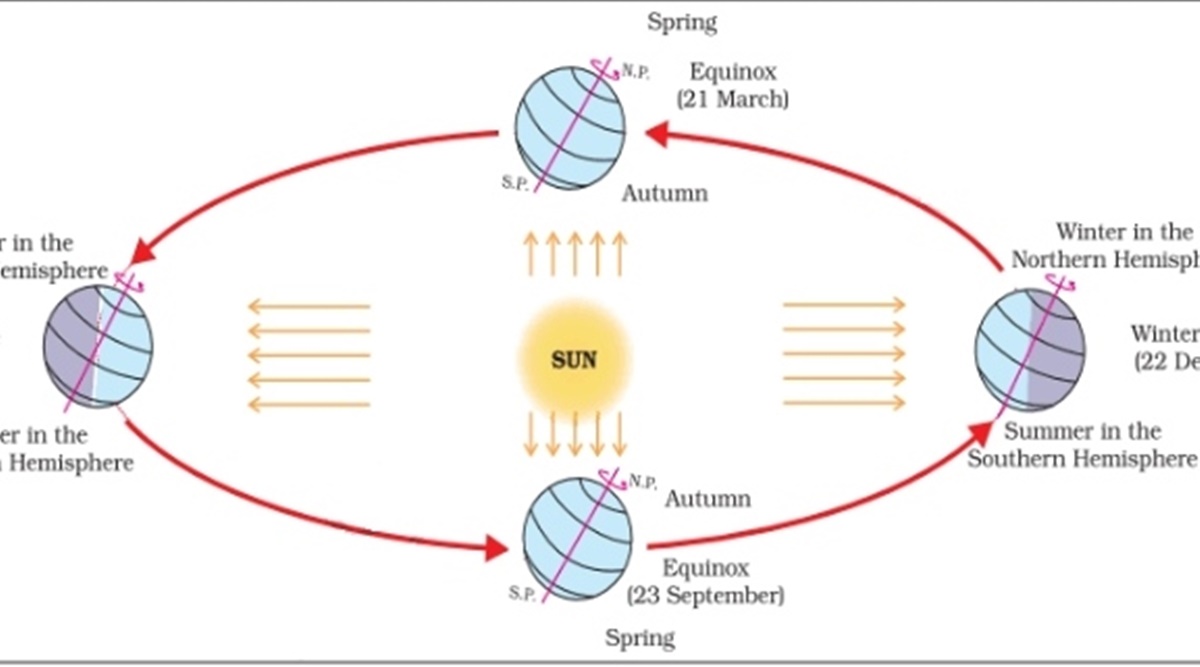 A schematic diagram of the Earth's rotation around the Sun and the seasons over the hemispheres (Source: Astronomical Society of India)
A schematic diagram of the Earth's rotation around the Sun and the seasons over the hemispheres (Source: Astronomical Society of India)Friday marks the autumn equinox in the northern hemisphere, an astronomical event resulting in an equal duration of day and night on this particular day.
The earth’s axial tilt and its relative position in its orbit of rotation around the Sun give rise to seasons like summer or winter. According to the Astronomical Society of India, there are two equinoxes in a year, during which the Sun’s rays falling on the Earth are perpendicular to the Earth’s axis. It is also that time of the year when the Sun crosses over the equator either to the northern or the southern hemisphere.
The autumn equinox marks the beginning of the winter season in the northern hemisphere and during the months ahead, the northern hemisphere remains farther away from the Sun.
After the autumn equinox, the length of the days in the northern hemisphere begins to shorten, and cooler weather sets in gradually. It is the opposite over the southern hemisphere, where it is the onset of summer.